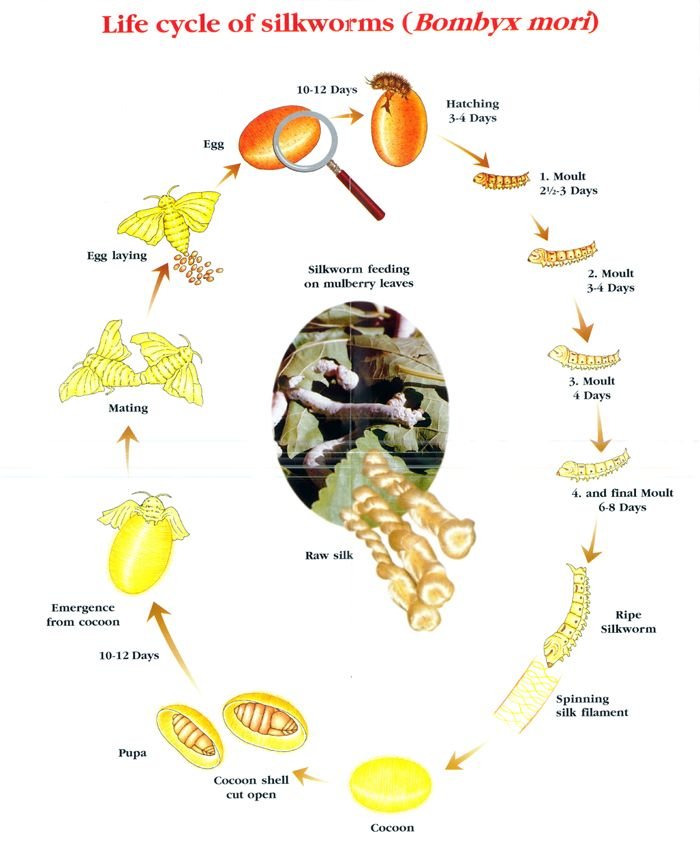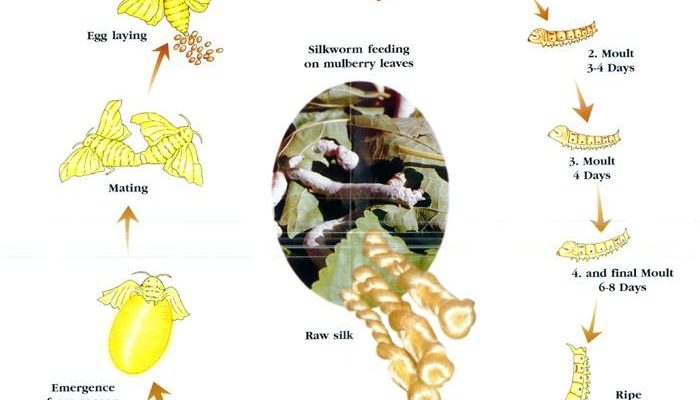
Monitoring these stages is more than a fun hobby; it’s essential for successful silkworm rearing. As a beginner, you might feel overwhelmed by the details, but don’t worry! I’ll walk you through the whole process, revealing how to recognize what’s happening during each phase. Not only will I share tips to help you monitor their progress efficiently, but I’ll also provide insights into how to create the ideal environment for your silkworms. So grab your cup of coffee, and let’s dive into the world of silkworm molting!
What Is Molting in Silkworms?
Molting, or ecdysis, is a natural process that all insects, including silkworms, undergo as they grow. Think of it like a magic trick where the old skin is magically discarded to reveal a fresh, shiny new layer underneath. For silkworms, this process occurs multiple times throughout their life cycle, specifically five times before they reach the pupal stage.
During each molting stage, silkworms grow and develop, which helps them prepare for their transformation into a moth. Each phase has its own characteristics, and recognizing these can really enhance your experience as a silkworm caretaker. You might wonder why this matters; well, understanding their molting stages can help you monitor their health, diet, and overall well-being.
The Life Cycle of Silkworms
Silkworms have a fascinating life cycle that consists of several stages: egg, larva (caterpillar), pupa, and adult moth. Let’s break it down a bit:
- Egg Stage: This is where everything begins. Silkworm eggs are tiny and can be easily overlooked. They take about 10 days to hatch.
- Larval Stage: After hatching, the silkworms enter this stage, which is the most active phase. They eat tons of mulberry leaves and grow quickly.
- Pupal Stage: Once they’re big enough, silkworms spin cocoons and transition into the pupal stage. This is the stage where they undergo metamorphosis.
- Adult Stage: Finally, they emerge as adult moths ready to lay eggs and start the cycle all over again.
Each of these stages has distinct characteristics, but today we’re focusing mainly on the larval stage, particularly the molting that occurs during this time. Recognizing these stages can tell you a lot about their health and whether they’re thriving.
Recognizing the Molting Stages
So, how can you tell when your silkworms are about to molt? There are several signs to look out for:
1. **Behavior Change:** Before molting, silkworms often become less active. They’ll stop eating as much and may even appear restless. It’s like they know something big is about to happen!
2. **Color Change:** Pay attention to their color. As they prepare to shed their skin, silkworms might develop a duller hue. This can indicate that they’re ready to enter the molting phase.
3. **Shedding Process:** When they do begin to molt, you might notice the old skin wrinkling and splitting. It’s pretty incredible to see the fresh, new skin emerge. This process usually takes a few hours.
Watching for these signs not only makes you a better silkworm caregiver, but it can also be a bit mesmerizing. It’s like witnessing nature’s magic right in front of your eyes!
How to Create a Healthy Environment for Molting
Creating the right environment is key to smooth molting. Here are a few tips to make sure your silkworms have everything they need:
1. **Humidity Levels:** Silkworms thrive in a humid environment. The ideal humidity level is around 60-70%. You can achieve this by misting their habitat lightly or using a humidifier.
2. **Cleanliness:** Keeping their space clean is crucial. Old leaves or waste can harbor bacteria, which can lead to health issues during molting. Regularly change their bedding and ensure it’s free of mold.
3. **Temperature Control:** Silkworms prefer temperatures between 23-28 degrees Celsius (73-82 degrees Fahrenheit). Fluctuations can stress them out, so try to maintain a stable temperature.
By giving them the right environment, you make the molting process less stressful. Trust me, they’ll thank you for it by growing right on schedule!
Common Problems During Molting
Even with the best care, you might run into some problems while monitoring your silkworms during their molting stages. Here are a few common issues and how to deal with them:
1. **Difficulties Shedding:** Sometimes, silkworms may struggle to shed their skin properly. This could be due to low humidity or stress, so check your environmental conditions right away.
2. **Inactivity:** As mentioned earlier, they become less active during molting, but excessive inactivity could signal other problems, like illness. Keep a close eye on them and consult resources or communities if you’re concerned.
3. **Skin Issues:** If you notice spots or other abnormalities on their new skin after molting, it could indicate a bigger health concern. Again, reaching out to other silkworm enthusiasts can help you troubleshoot.
Being proactive about these potential issues means you can address problems before they become serious. Plus, it’s just part of the rewarding experience of raising silkworms!
Tracking Development Through Each Molting Phase
To make the most out of your silkworm rearing experience, consider keeping a journal or log of their development. Here’s how this can help:
1. **Observation Skills:** By noting down behaviors, growth rates, and conditions during each molting stage, you can improve your observation skills. This helps you spot patterns and recognize when something’s off.
2. **Nurturing Growth:** Tracking their progress allows you to modify their environment based on what you learn. You’ll become better attuned to their needs over time.
3. **Sharing Insights:** If you’re an active member of a silkworm-loving community, sharing your observations could help others too. You never know—your notes might provide someone with the solutions they need!
Keeping records can feel like a chore, but it can also deepen your connection with your silkworms. It’s like being their personal historian!
Monitoring silkworm molting stages is an exciting adventure. It’s all about being attentive and learning as you go. You’ve got to appreciate the unique beauty of the process and the transformations these little creatures undergo. Each stage of molting provides insights into their health and progress, helping you become a more skilled silkworm caretaker.
So, as you sip your coffee and watch your silkworms thrive, remember that every change is a step toward creating something beautiful. Whether you’re inspired by the delicate silk they produce or simply fascinated by their life cycle, there’s plenty of joy to be found in caring for these remarkable insects. Happy silkworm raising!

